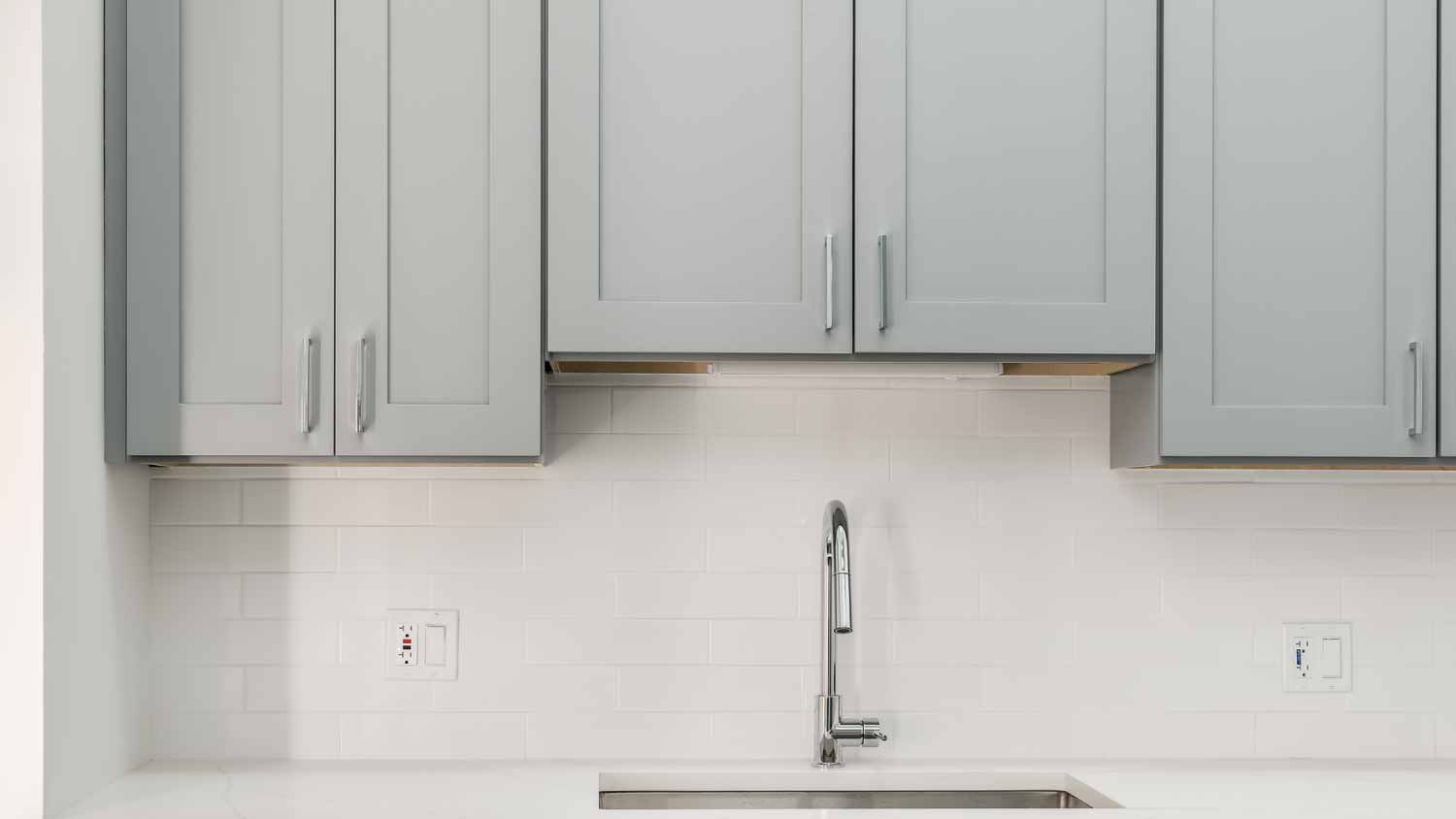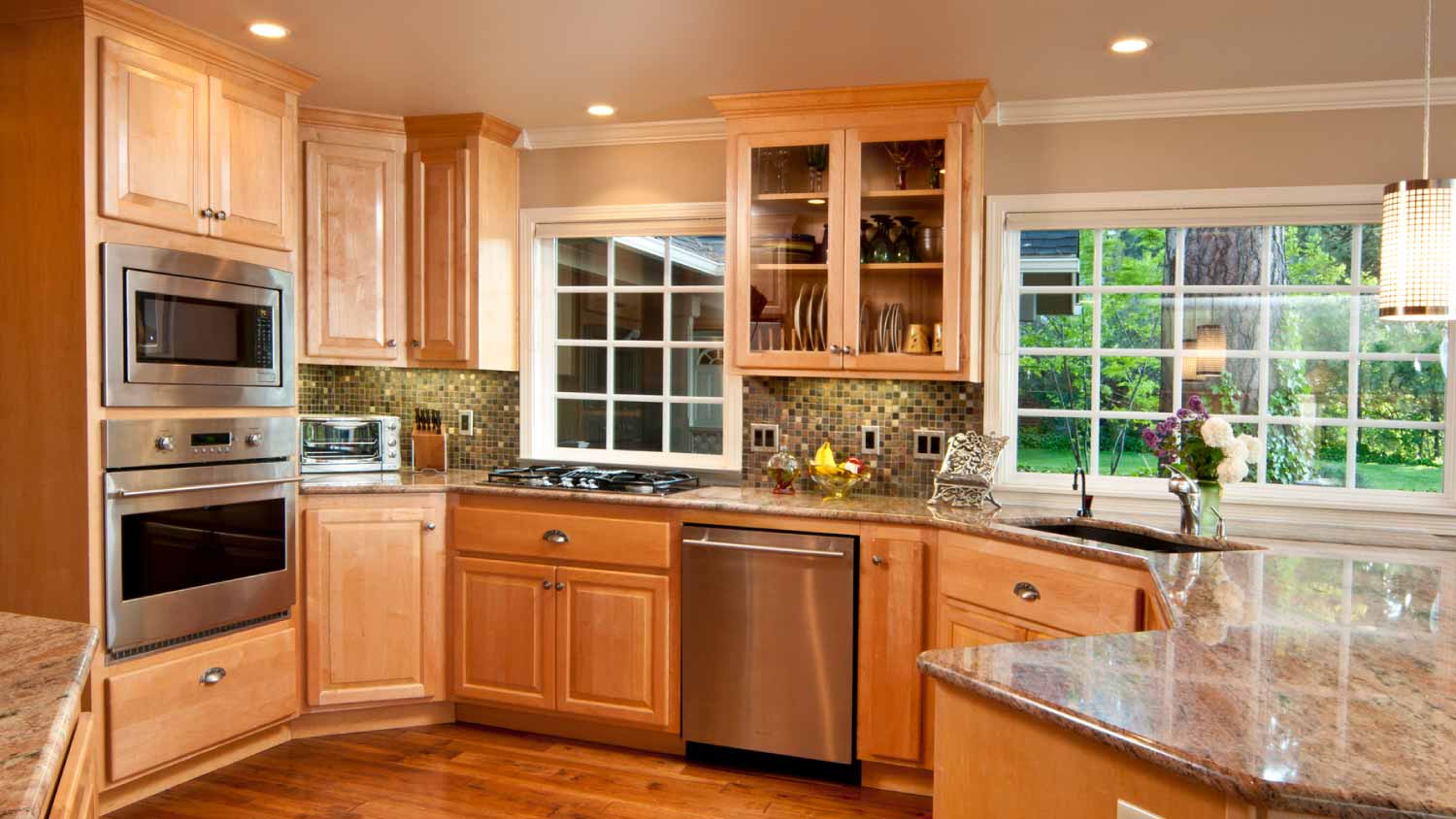Full vs. Partial Overlay Cabinets: Which Is Right for You?
Weigh the pros and cons to pick the right style for your kitchen


Full overlay cabinets have an uncluttered, modern look.
Partial overlay cabinets leave a portion of the face frame visible.
Full overlay cabinets have wider openings.
Partial overlay cabinets tend to be more affordable and durable.
If you’re planning to upgrade your kitchen cabinets, chances are you’ve come across several different types of cabinet door styles. Getting to know the differences will give you a good foundation for choosing what type of cabinet suits your needs best. Whether you plan to DIY your cabinet installation or hire a pro to get your kitchen remodel done, here’s what you need to know about full versus partial overlay cabinets.
Full vs. Partial Overlay Cabinets: Key Differences
Full overlay cabinets have doors and drawers that completely cover the front of the cabinet. They can be either framed or frameless, and they generally offer a cleaner, more modern style. With partial overlay cabinets, a portion of the cabinet face frame—usually a half inch—is visible. Partial overlay cabinets tend to cost slightly less but can only be installed with face frames.
What Are Full Overlay Cabinets?

Full overlay cabinets have drawers and doors that cover the entire front of the cabinet. The hinges are concealed, so they aren’t visible when the cabinets are closed. Full overlay cabinets are often frameless and thus have larger openings. Full overlay cabinets have a sleek, modern look, but because they use slightly more wood, they can be a bit more expensive than partial overlay cabinets.
Here’s a breakdown of the pros and cons of full overlay cabinets:
| Pros | Cons |
|---|---|
| Sleek, modern look | Slightly more expensive |
| Hinges aren’t visible | Use more lumber |
| Opening is wider than partial overlay | Can be less durable |
Best for:
Modern design style
Overall usable cabinet space
A more polished look
Pros of Full Overlay Cabinets
Full overlay cabinets have a clean, modern look and tend to have wider openings than partial overlay cabinets. And you won’t see the concealed hinges when the cabinets are closed.
Cons of Full Overlay Cabinets
Full overlay cabinets can be more expensive than partial overlay cabinets. Since the doors and drawers of full overlay cabinets come all the way to the edge of the cabinet frame, they are more exposed and can be more easily damaged. And because face frames add strength and support to a cabinet, frameless cabinets can sometimes be less durable.
What Are Partial Overlay Cabinets?

With partial overlay cabinets, a portion of the face frame is visible around the doors and drawers. This is sometimes considered to be a more dated look. The openings of these cabinets tend to be smaller because they have face frames that protrude into the interior. Partial overlay cabinets are usually a little more affordable than frameless cabinets and are sometimes easier to install.
Here are some helpful pros and cons to consider when looking at partial overlay cabinets:
| Pros | Cons |
|---|---|
| More cost-effective | More dated look |
| Use less material | Hinges may be visible |
| Can be more durable | Smaller cabinet openings |
Best for:
Budget-friendly remodels
Durability
Rustic, vintage style
Pros of Partial Overlay Cabinets
Partial overlay cabinets are usually more affordable than full overlay cabinets. They also tend to be more durable than full overlay cabinets because the face frame is wider and the doors and drawers aren’t exposed at the edges.
Cons of Partial Overlay Cabinets
Partial overlay cabinets have smaller openings than full overlay cabinets because of their face frames. The overall profile of a partial overlay cabinet can appear more dated and less polished because of the gaps between door and drawer faces. Hinges are sometimes visible when the cabinets are closed.
Full vs. Partial Overlay Cabinets

Appearance: Full Overlay
Full overlay cabinets look less busy and more modern and help the kitchen feel more polished. For aesthetics, you can’t beat clean lines that don’t draw your eye away from the millwork and other features of your kitchen cabinetry.
Cost: Partial Overlay
While factors such as the quality of the materials will have the biggest effect on the price, in general, full overlay cabinets can cost up to 16% more than partial overlay cabinets.
Ease of Use: Full Overlay
Full overlay cabinets have slightly wider openings than partial overlay cabinets, making the interior space of the cabinets more accessible.
Length of Life: Partial Overlay
Frameless cabinets lack the extra strength and structure that face frames provide. And because the edges of the doors and drawers of full overlay cabinets are more exposed, they’re more likely to see wear and tear. For these reasons, partial overlay cabinets have a good chance of outlasting their full overlay counterparts.
Cost to Install Cabinets
Kitchen cabinets can cost anywhere from $2,000 to $10,800, with an average cost of $6,200. The price can land anywhere between $100 and $1,200 per linear foot and is affected by many factors, particularly the size of the cabinets, whether you buy stock, semi-stock, or custom-made cabinets, if the design is framed or frameless, and the material of the cabinets.
Stock cabinets are typically no more than $300 per linear foot, while custom cabinets cost upwards of $500 per linear foot, and semi-stock cabinets fit in between the two. Full overlays cost slightly more than partial overlays and frameless designs cost up to 15% more than framed cabinets.
DIY vs. Hiring a Pro
It is technically possible to install kitchen cabinets yourself, but it is a challenging, time-consuming process few DIYers are qualified to tackle. It’s best to hire a professional cabinet contractor unless you have help and a lot of experience doing more advanced carpentry projects. If you can DIY kitchen cabinets successfully, you’ll save around $2,000. But keep in mind that securing the cabinets to the wall properly is challenging, and if the cabinets fall, you’ll spend a lot more to repair the damage than you would have paid to hire a professional in the first place.
If your kitchen cabinets are not in bad condition, consider refacing or painting them or even replacing the doors or hardware rather than completely replacing them. These upgrades are dramatically less expensive and easier to DIY than completely replacing the cabinets.
Frequently Asked Questions
The most common cabinet overlay size is ½ inch for a partial overlay or 1 ¼ inch for a full overlay.
Shaker cabinets are best defined by their square edges and recessed center panel, which is surrounded by two rails and two stiles. These cabinets can feature a full inset, a full overlay, or a partial overlay. While this cabinet design may have originated in the 1800s, the clean, crisp lines are ideal for modern styles, making them a popular option for all types of kitchens.
Full overlay cabinets can be framed or frameless. Because they completely cover the frame when closed, a frame is optional with this door style. You can only tell if these cabinets are framed or frameless when the doors are open and you can see the cabinet's interior. Frameless designs are larger and more accessible, but they also cost more.















